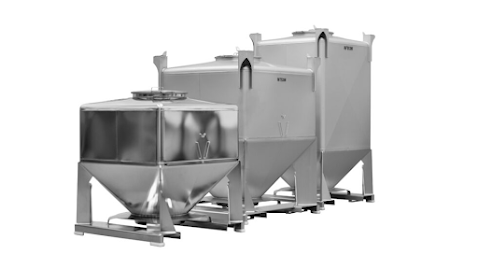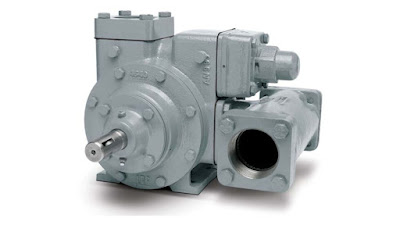What is powder handling in the pharmaceutical industry?
 |
| What is powder handling in the pharmaceutical industry? |
Powder handling in the pharmaceutical industry refers to the process of ensuring uniform, reliable flow with minimal segregation. It is a critical aspect of pharmaceutical and chemical processes. Besides efficiently moving powdered substances, it’s also essential to make sure the product stays clean and doesn’t get mixed with unwanted stuff. It’s eqully important to protect the person handling the materials, especially when they’re dealing with potentially harmful substances.
The importance of powder handling in the pharmaceutical industry cannot be overstated. It is crucial for maintaining the quality and safety of pharmaceutical products. Improper handling can lead to issues such as contamination, which can compromise the efficacy of the product and pose health risks. Therefore, a full understanding of powder flow behaviour and the corresponding equipment options is essential when developing, optimising, or scaling up a drug product process.
What are the methods of powder handling?
There are several key methods and techniques used in powder handling in the pharmaceutical industry. Let’s take a closer look along at these.
· Dispensing and Weighing: This is the initial stage where the powder is dispensed and weighed to ensure the correct amount is used.
· Blending: This involves mixing different powders to achieve a uniform distribution of each component.
· Milling: This process reduces the size of the powder particles, which can improve the dissolution rate of the drug.
· Drying: After wet granulation, drying is necessary to reduce the moisture content.
· Mixing: This ensures a homogenous mixture of all components.
· Pressing and Coating: In tablet manufacturing, pressing is used to form the tablets, and coating is applied to improve tablet handling and control the release of the drug.
· Granulation: This process involves forming granules from powder, which can improve flow properties and make the powder easier to handle.
Apart from these methods, there are four main methods of mixing powders in small-scale operations: Trituration, Spatulation, Sifting, and Tumbling. Each method has its own advantages and is chosen based on the specific requirements of the pharmaceutical product being manufactured.
The impact of powder handling in tablet manufacturing and processing
Powder handling significantly impacts tablet manufacturing and processing in the pharmaceutical industry. Here’s how:
· Granulation: Granulation is a fundamental process in pharmaceutical manufacturing that involves the formation of granules or aggregates from fine powder particles. These tiny bits are usually made up of important ingredients and other substances. They’re used as middle steps in making different kinds of medicine, especially when making tablets is the main goal. The goal of granulation is to enhance the flow properties, compressibility, and content uniformity of the powders, making them suitable for further processing into tablets or capsules.
· Enhanced Flowability: Granules flow more uniformly and predictably than powders, which is crucial for consistent tablet filling. This better ability to move smoothly makes sure that the moulds for tablets get filled evenly.
· Optimised Compressibility: Granules have better compressibility, allowing for the creation of tablets with uniform hardness and density. Having everything the same is really important to make sure the medicine is the right amount and dissolves properly when you take it.
· Content Uniformity: Granulation helps ensure that the Active Pharmaceutical Ingredient (API) is uniformly distributed within the granules.
Proper powder handling techniques are essential in ensuring that each dose — a single tablet or capsule — is consistent. It’s a critical step that can significantly impact the quality and efficiency of tablet production.
Modern Methods and Technologies for Efficient Powder Handling
Modern methods and technologies have significantly improved the efficiency of powder handling in the pharmaceutical industry. Here are some of them:
· Rheological Function Consideration: Manufacturers must consider rheological function to select a system that promotes material flow and reliable transfers. Geometric feasibility for the manufacturing space, throughput objectives, and Good Manufacturing Practice (GMP) compliance must also be factored in.
· Containment Targets: It’s important for manufacturers to set containment targets: what is the acceptable operator exposure range for the most hazardous material in the process?
· Closed Powder Handling: In recent times, products have become more toxic and reactive, and production quality standards have become stricter. Because of this, it’s now essential to use closed systems for handling powders, and manual handling is no longer the way to go. Choosing the right technology has become crucial for any project because it can greatly affect how the whole installation is designed, from the building structure to the equipment used.
These modern methods and technologies have made it possible to handle powders more efficiently, safely, and reliably, thereby enhancing productivity in the pharmaceutical industry.
IDEX powder handling tools and machines for the pharmaceutical industry
IDEX offers a range of powder handling tools and machinery for the pharmaceutical industry. Here are some of them:
· Fitzpatrick: This company is part of IDEX Material Processing Technologies and specialises in solid particle size reduction.
· Matcon: Matcon specialises in powder handling systems. They are the manufacturers of the original Cone Valve for effective powder discharge using Intermediate Bulk Containers (IBCs). The Matcon powder handling system is based on using IBCs to transport powders between the manufacturing steps and blend powders. The special Cone Valve solves problems related to powders like separating, containing them, and getting them stuck together.
· Microfluidics: Microfluidics, another company under IDEX Material Processing Technologies, specialises in liquid nanoparticle size reduction.
· Quadro Engineering Corp: Quadro Engineering Corp provides solutions for particle processing and powder milling equipment.
· Powder Pumps: IDEX offers a variety of powder pumps for different applications, including metering, conveying, and feeding.
These tools and machinery from IDEX are technologically superior and optimised to meet the needs of every customer. They enable manufacturers around the world to achieve consistent, repeatable results in size reduction solutions, powder handling, and tablet handling.
Conclusion
Efficient powder handling is of utmost importance in the pharmaceutical industry, as it directly impacts product quality, safety, and manufacturing efficiency. Proper techniques and equipment ensure uniformity, minimise contamination risks, and safeguard both the product and the operators. Modern methods and technologies have revolutionised powder handling, enhancing the industry’s capacity to develop and produce high-quality medicinal products. IDEX, through its various subsidiaries such as Fitzpatrick, Matcon, Microfluidics, and Quadro Engineering Corp, offers an array of cutting-edge tools and machinery that cater to the diverse needs of pharmaceutical manufacturers, enabling them to achieve precise particle size, optimise production, and ensure the efficacy of pharmaceutical products. By continually investing in innovation and adhering to strict quality standards, IDEX plays a pivotal role in advancing the field of powder handling in the pharmaceutical industry.


.png)
Comments
Post a Comment